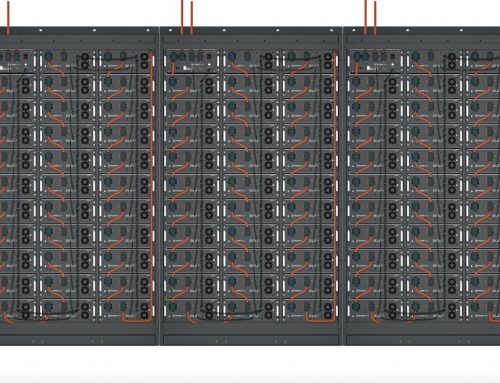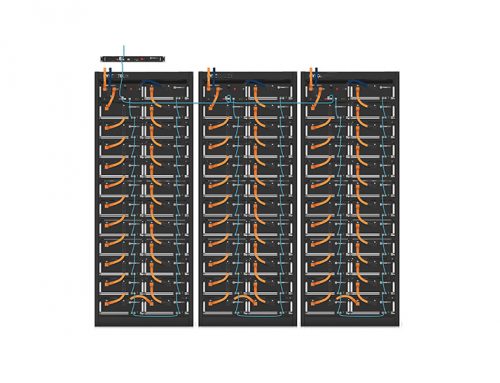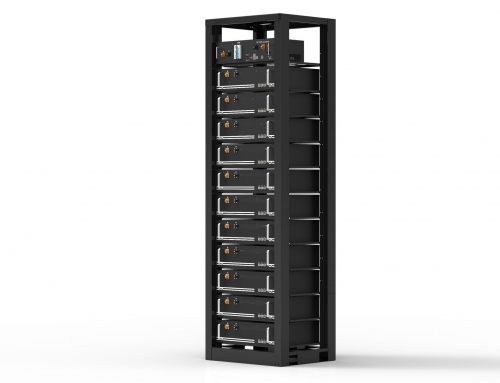Project Description
Lithium Iron Phosphate Battery power wall 51.2V/50Ah/100Ah/200Ah
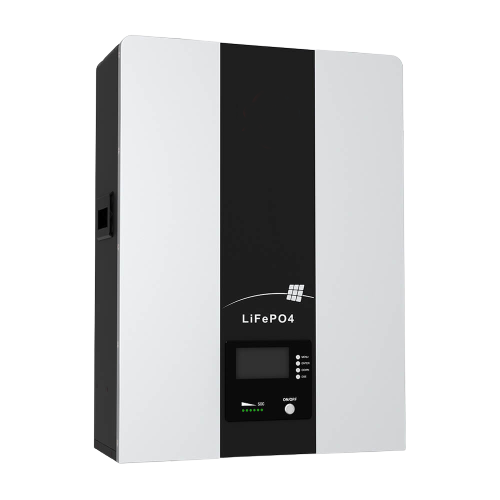
Lithium Iron Phosphate Battery power wall 51.2V/50Ah/100Ah/200Ah
- 4000 cycles @80% DoD for an effectively lower total of ownership cost;
- Low maintenance batteries with stable chemistry;
- Battery Management
| ELECTRICAL PERFORMANCE | |||
| Model Num | 51.2V/50Ah | 51.2V/100Ah | 51.2V/200Ah |
| Nominal Voltage | 51.2 V | 51.2 V | 51.2 V |
| Nominal Capacity | 50Ah | 100 Ah | 200 Ah |
| Capacity @ 20A | 150 min | 300 min | 600 min |
| Energy | 2560 Wh | 5120 Wh | 10240 Wh |
| Communication | CAN2.0/RS232/RS485 | CAN2.0/RS232/RS485 | CAN2.0/RS232/RS485 |
| Resistance | ≤45 mΩ @ 50% SOC | ≤45 mΩ @ 50% SOC | ≤45 mΩ @ 50% SOC |
| Efficiency | >96% | >96% | >96% |
| Module Parallel | Up to 3 packs | Up to 3 packs | Up to 3 packs |
| CHARGE PERFORMANCE | |||
| Recommended Charge Current | 20A | 20A | 20A |
| Maximum Charge Current | 50A | 100A | 100A |
| Recommended Charge Voltage | 57.6V | 57.6V | 57.6V |
| BMS Charge Cut-Off Voltage | <58.4 V (3.65V/Cell) | <58.4 V (3.65V/Cell) | <58.4 V (3.65V/Cell) |
| Reconnect Voltage | >57.6 V (3.6V/Cell) | >57.6 V (3.6V/Cell) | >57.6 V (3.6V/Cell) |
| Balancing Voltage | <57.6 V (3.6V/Cell) | <57.6 V (3.6V/Cell) | <57.6 V (3.6V/Cell) |
| Maximum Batteries in Series | 16 (*Consult MUST) | 16 (*Consult MUST) | 16 (*Consult MUST) |
| DISCHARGE PERFORMANCE | |||
| Maximum Continuous Discharge Current | 50 A | 100 A | 100 A |
| Peak Discharge Current | 60 A (3s) | 110 A (3s) | 110 A (3s) |
| BMS Discharge Cut-Off Current | 75 A (300ms) | 150 A (300ms) | 150 A (300ms) |
| Balancing open voltage | 55.2 V (3.45V/Cell) | 55.2 V (3.45V/Cell) | 55.2 V (3.45V/Cell) |
| Recommended Low Voltage Disconnect | 44 V (2.75V/Cell) | 44 V (2.75V/Cell) | 44 V (2.75V/Cell) |
| BMS Discharge Cut-Off Voltage | >32.0V (2s) (2.0V/Cell) | >32.0V (2s) (2.0V/Cell) | >32.0V (2s) (2.0V/Cell) |
| Reconnect Voltage | >40.0 V (2.5V/Cell) | >40.0 V (2.5V/Cell) | >40.0 V (2.5V/Cell) |
| Short Circuit Protection | 250 ~ 500 μs | 250 ~ 500 μs | 250 ~ 500 μs |
| COMPLIANCE | |||
| Certifications | CE (battery) UN38.3 (battery) UL1642 & IEC62133 (cells) |
CE (battery) UN38.3 (battery) UL1642 & IEC62133 (cells) |
CE (battery) UN38.3 (battery) UL1642 & IEC62133 (cells) |
| Shipping Classification | UN 3480, CLASS 9 | UN 3480, CLASS 9 | UN 3480, CLASS 9 |
| MECHANICAL PERFORMANCE | |||
| Dimension (L x W x H) | 525 x 350 x 135 mm 20.7 x 13.8 x 5.3″ |
580 x 400 x 145 mm 22.8 x 15.7 x 5.7″ |
580 x 420 x 230 mm 21.7 x 16.5 x 9.05″ |
| Approx. Weight | 10.5 lbs (23 kg) | 20.0 lbs (44 kg) | 37.2 lbs (82 kg) |
| Terminal Type | DIN POST | DIN POST | DIN POST |
| Terminal Torque | 80 ~ 100 in-lbs (9 ~ 11 N-m) | 80 ~ 100 in-lbs (9 ~ 11 N-m) | 80 ~ 100 in-lbs (9 ~ 11 N-m) |
| Case Material | SPPC | SPPC | SPPC |
| Enclosure Protection | IP65 | IP65 | IP65 |
| TEMPERATURE PERFORMANCE | |||
| Discharge Temperature | -4 ~ 131 ºF (-20 ~ 55 ºC) | -4 ~ 131 ºF (-20 ~ 55 ºC) | -4 ~ 131 ºF (-20 ~ 55 ºC) |
| Charge Temperature | -4 ~ 113 ºF (0 ~ 45 ºC) | -4 ~ 113 ºF (0 ~ 45 ºC) | -4 ~ 113 ºF (0 ~ 45 ºC) |
| Storage Temperature | 23 ~ 95 ºF (-5 ~ 35 ºC) | 23 ~ 95 ºF (-5 ~ 35 ºC) | 23 ~ 95 ºF (-5 ~ 35 ºC) |
| BMS High Temperature Cut-Off | 149 ºF (65 ºC) | 149 ºF (65 ºC) | 149 ºF (65 ºC) |
| Reconnect Temperature | 131 ºF (55 ºC) | 131 ºF (55 ºC) | 131 ºF (55 ºC) |
| HEATING FOIL PERFORMANCE | |||
| Heating Temperature Range | -4 to 41 ºF (-20 to 5 ºC) | -4 to 41 ºF (-20 to 5 ºC) | -4 to 41 ºF (-20 to 5 ºC) |
| Heating Time | Approximately 1 hour @ 7.5 A | Approximately 1 hour @ 7.5 A | Approximately 1 hour @ 7.5 A |
| BMS Heating Foil Cut-Off | 158 ºF (70 ºC) | 158 ºF (70 ºC) | 158 ºF (70 ºC) |
- 4000 Cycles @80% DoD For Effectively Lower Total Of Ownership Cost;
- Low maintenance batteries with stable chemistry;
- Battery Management System (BMS) is incorporated against abuse;
- Up to 6 months thanks to its extremely low self-discharge (LSD) rate and no risk of sulphation;
- Save time and increase productivity with fewer downtime thanks to superior charge/discharge efficiency;
- Suitable for use in a wider range of applications where the ambient temperature is unusually high: up to +60°C;
- Lithium batteries provide more Wh/Kg while also being up to 1/3 the weight of its SLA equivalent.
APPLICATION:
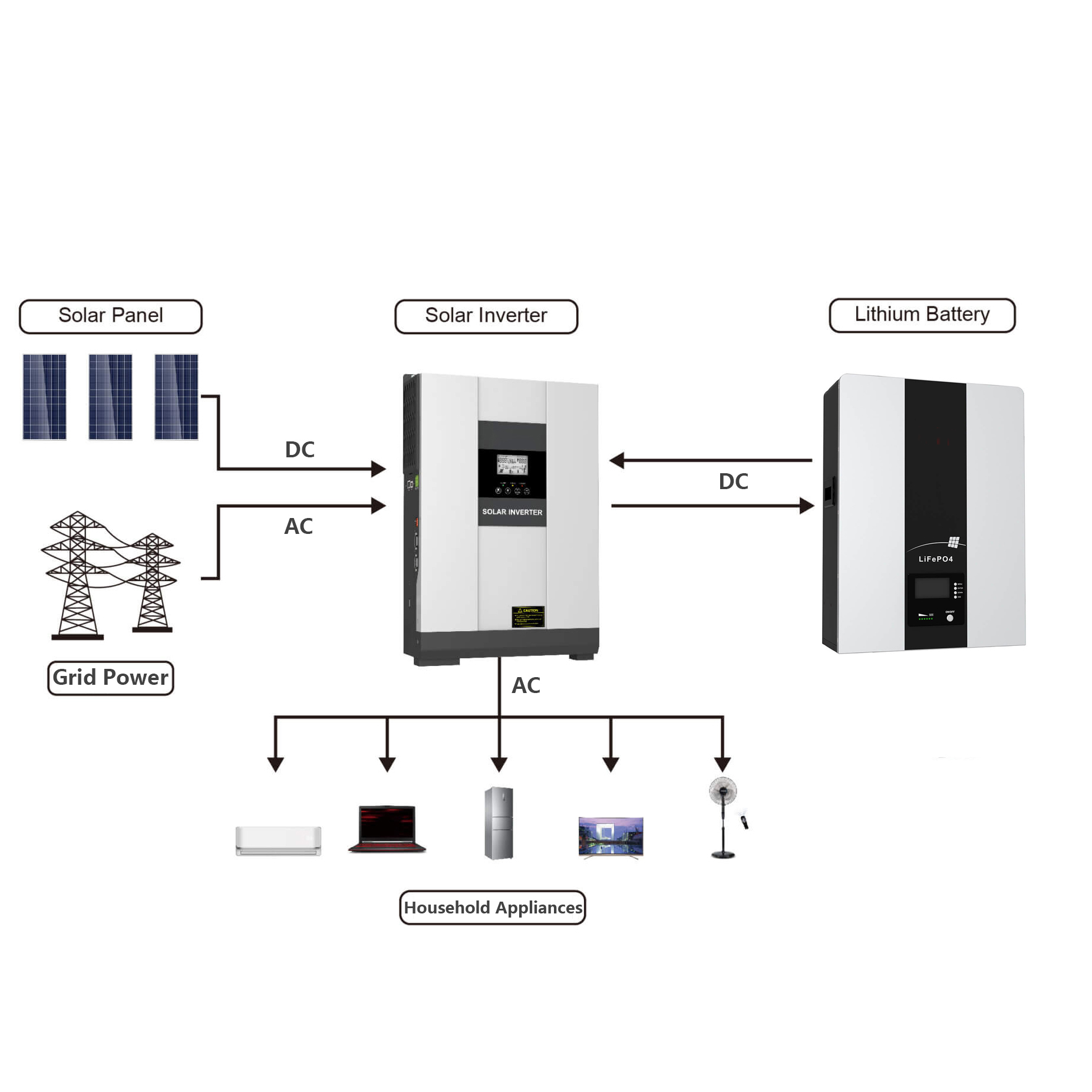
Lithium Iron Phosphate can be used in most applications that use Lead Acid, GEL or AGM type batteries.
Suitable applications include:
- Solar Storage
- Switching applications and more
- Base transceiver station
- Communication equipment
- Central office
- Telecommunication systems
- Electronic cash registers
- Microprocessor-based office machine
- UPS


